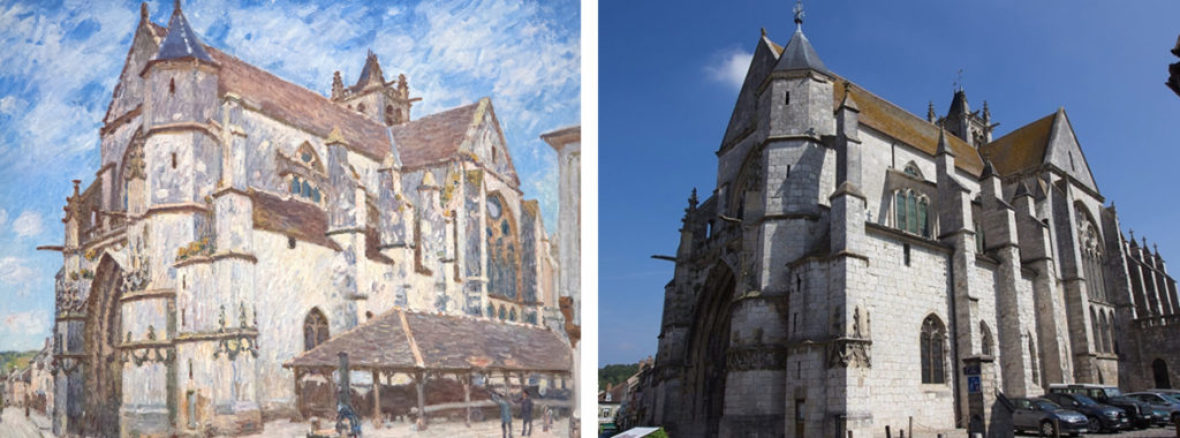Monet’s Rouen Cathedral series is among the most celebrated achievements in art history. More than three years after its inception in early February 1892, twenty of Monet’s thirty Cathedral canvases were exhibited at the Durand-Ruel gallery, and the show was overwhelmingly considered a triumph by those who attended in May of 1895. Among painters, Camille Pissarro wrote how he “was carried away by their extraordinary deftness. Cezanne, whom [Pissarro] met yesterday at Durand-Ruel’s, is in complete agreement…this is the work of a well-balanced but impulsive artist who pursues the intangible nuances of effects realized by no other painter.” (Camille Pissarro to his son, Lucien, May 26, 1895)
However, Monet was not so confident when pursuing the endeavor in April 1892. Known for habitual mood swings, Monet returned to Giverny with the first batch of Cathedral canvases and was worried that pushing light and its effect on form beyond all previous reckonings may be an excessive overreach. But as he unveiled the paintings to visitors, their response was awestruck amazement, and Monet’s confidence grew. The American painter Theodore Robinson’s effusive praise matched the stunned reaction others experienced upon seeing these masterpieces: “They are simply colossal. Never, I believe, has architecture been painted like this before, the most astonishing impression of the thing, a feeling of grandeur and decay…not a line anywhere — yet there is a wonderful sense of construction and solidity. Isn’t it curious, a man taking such material and making such magnificent use of it?” (Robinson to J. Alden Weir, May 1892)
Might Alfred Sisley have been among the first Cathedral responders? Definitely. Monet and he were the closest of friends. While Sisley was a private, quiet man who left few biographical breadcrumbs, he was also a highly trusted resource and an artist Monet respected mightily. In fact, first-hand accounts of Sisley and Monet’s cohorts confirm the link between the two series. A September 21, 1893 entry in the diary of Julie Manet (the then teenaged daughter of Berthe Morisot and Edouard Manet’s brother Eugéne) notes that “after a rainy morning, the day turned sunny, and we drove out to Moret…We saw Sisley.” Her son, art historian Denis Rouart confirmed the entry, further stating that “Berthe and her daughter…went with the Mallarmés to Moret where Sisley was painting a series of churches — inspired, or so Mallarmé thought by Monet’s series of Cathedrals.” (Denis Rouart, Paris, 1950)
Alfred Sisley had settled at Moret-sur-Loing in November 1889, a village of unmatched charm between île-de-France and Burgundy on the edge of the Fontainebleau Forest. Among its most attractive features is the imposing gothic-style Church of Norte-Dame that dominates the skyline from the river. From Sisley’s modest garden, the church’s tower was an omnipresent feature of the skyline.
Unlike Monet, whose thirty views of the westside Rouen Cathedral portico were executed exclusively as an examination of the play of light and shadow across the building’s façade, Sisley sought to affirm the permanent nature of the church under the varying changes of light and atmosphere captured in his paintings. Of the impressionists, he was most devoted to working outdoors without retreating to a studio for modifications or touchups. The quiet and private Sisley worked on his Cathedrals as he always had, alla prima and exclusively en plein air to show the changing appearance of a motif though a series of atmospheric changes. That he gave the works titles such as “In Sunshine”, “Under Frost”, and “In Rain” and exhibited them as a group at the Salon du Champ-de-Mars in 1894 suggests he also thought of them as serial interpretations.
Sisley was often cited for his gentle integrity and ability to render truthfulness of atmosphere and tone, but he was also capable of producing powerfully structured compositions and exceled in depicting scenes from unusual angles that energized his compositions. Not surprisingly, L’Église de Moret, le Soir provides an excellent example of how Sisley set his easel to great advantage. His line of sight is slightly tilted upward, but decidedly directed at the southwest portico corner. That bundled columnal feature emphasizes the imposing, upward thrust of the church motif. But the real artistry here is that it functions as the center from which two tensional forces are pulling away from one another and surprisingly, with commensurate strength. The brilliance of this painting is the dramatic effect of a plunging perspective created by the narrow street (rue de l’Église) at the left and the blanaced opposition is provides a stone structure of unimaginable weight and mass; both of which are planar aspects that beautifully demonstrate perfectly drafted three-point diminishing perspectives.
Of the dozen known oils Sisley painted of the church at Moret, L’Église de Moret, le Soir is not only of generous size, it is also among the largest paintings of his entire oeuvre. The scale of this work demonstrates Sisley’s determination to create an homage that fully respects the architects and builders of a structure so impregnable and resolute, that it stood the same when Sisley painted it as it did during medieval times, and stands for us today, as it will last in immemorial.
InquireArt Detail
ALFRED SISLEY (1839-1899)
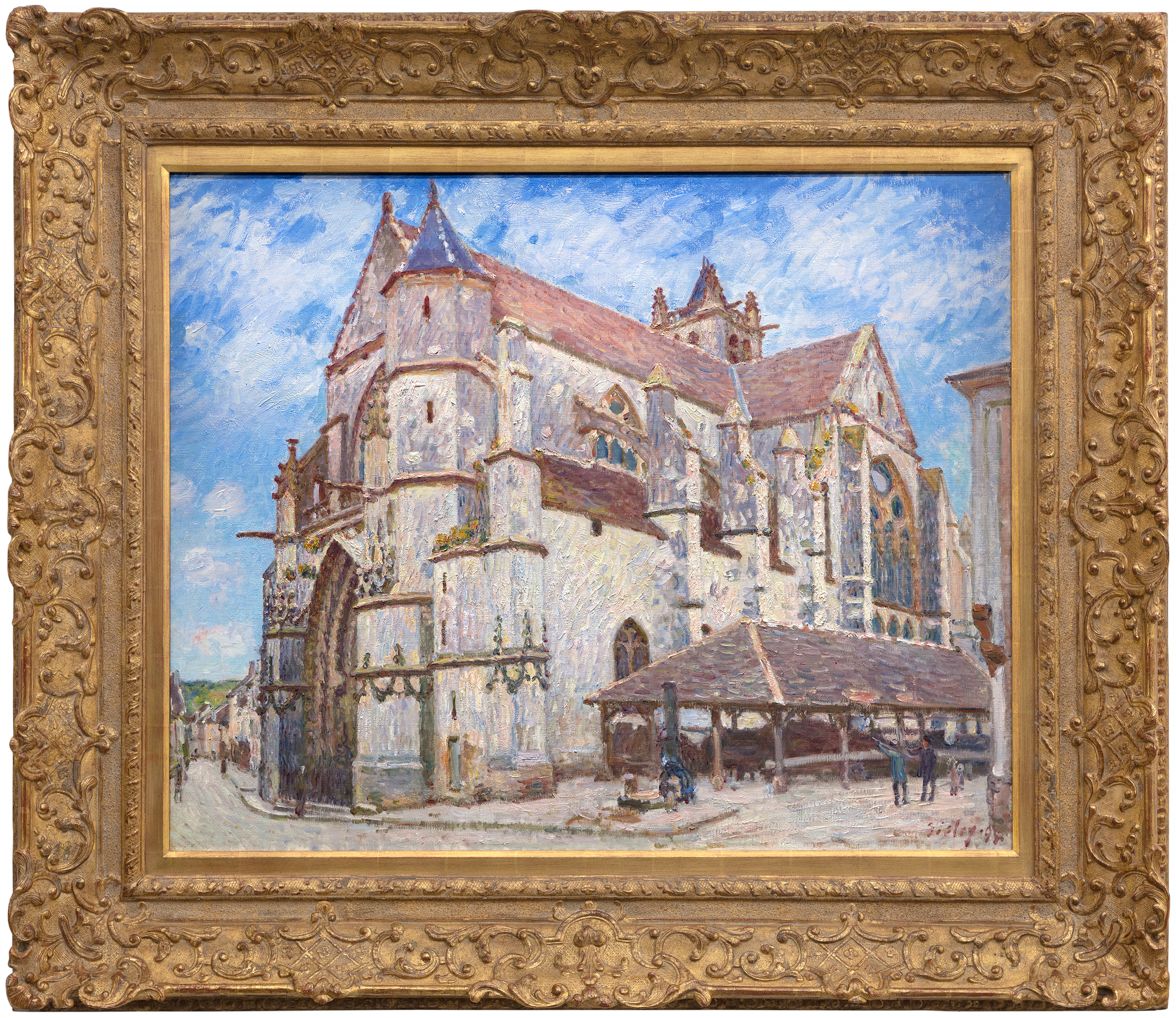
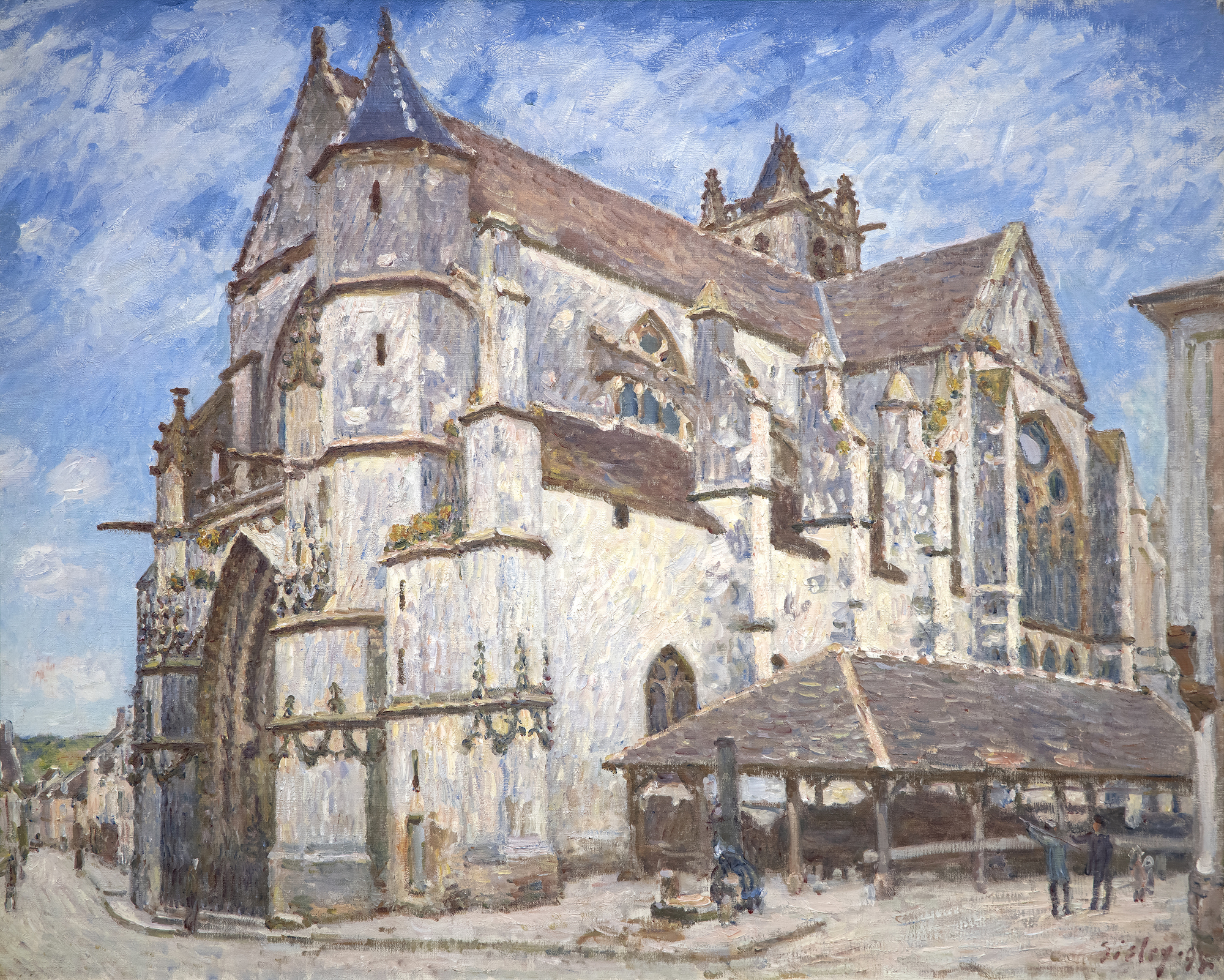
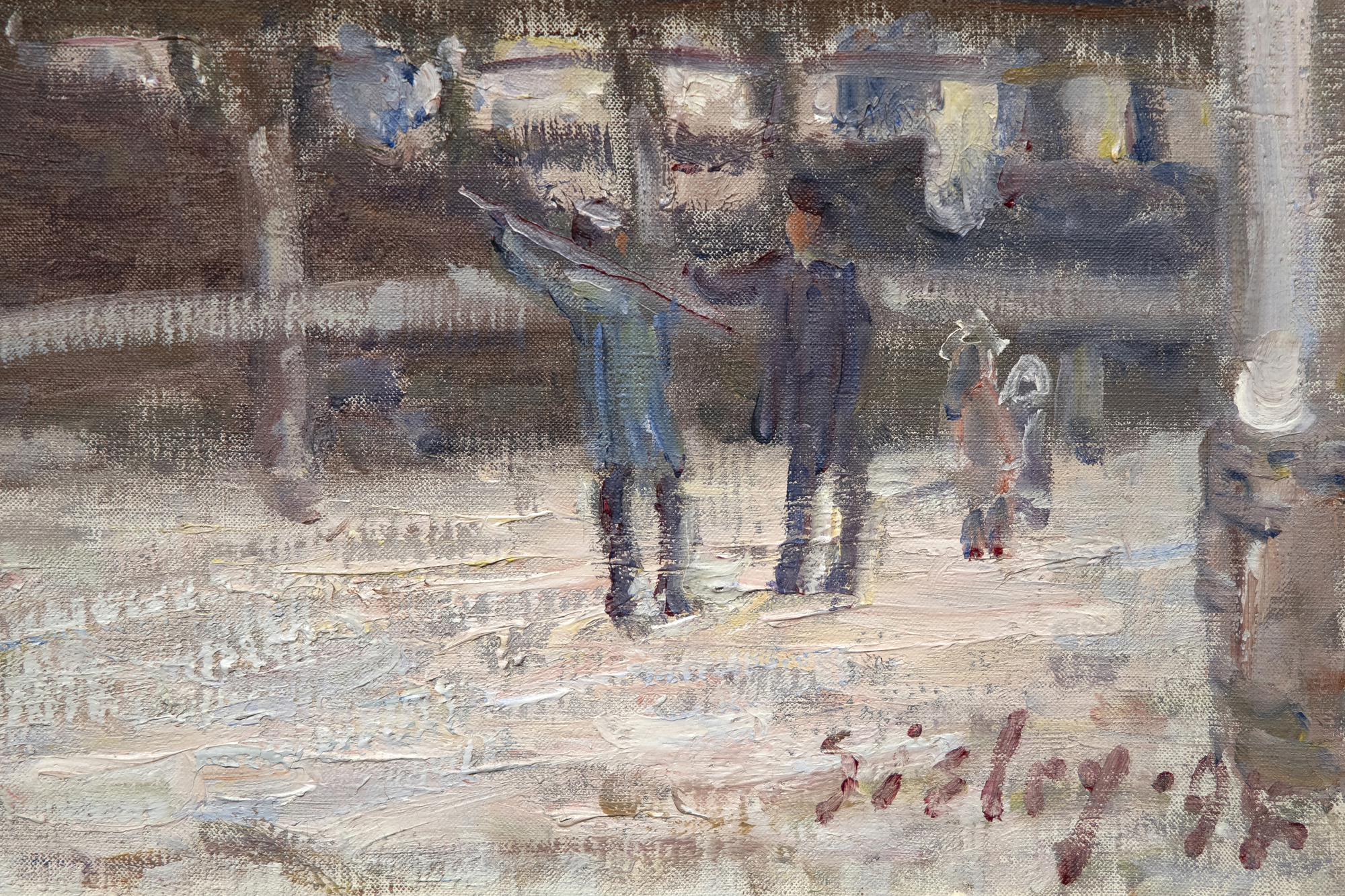
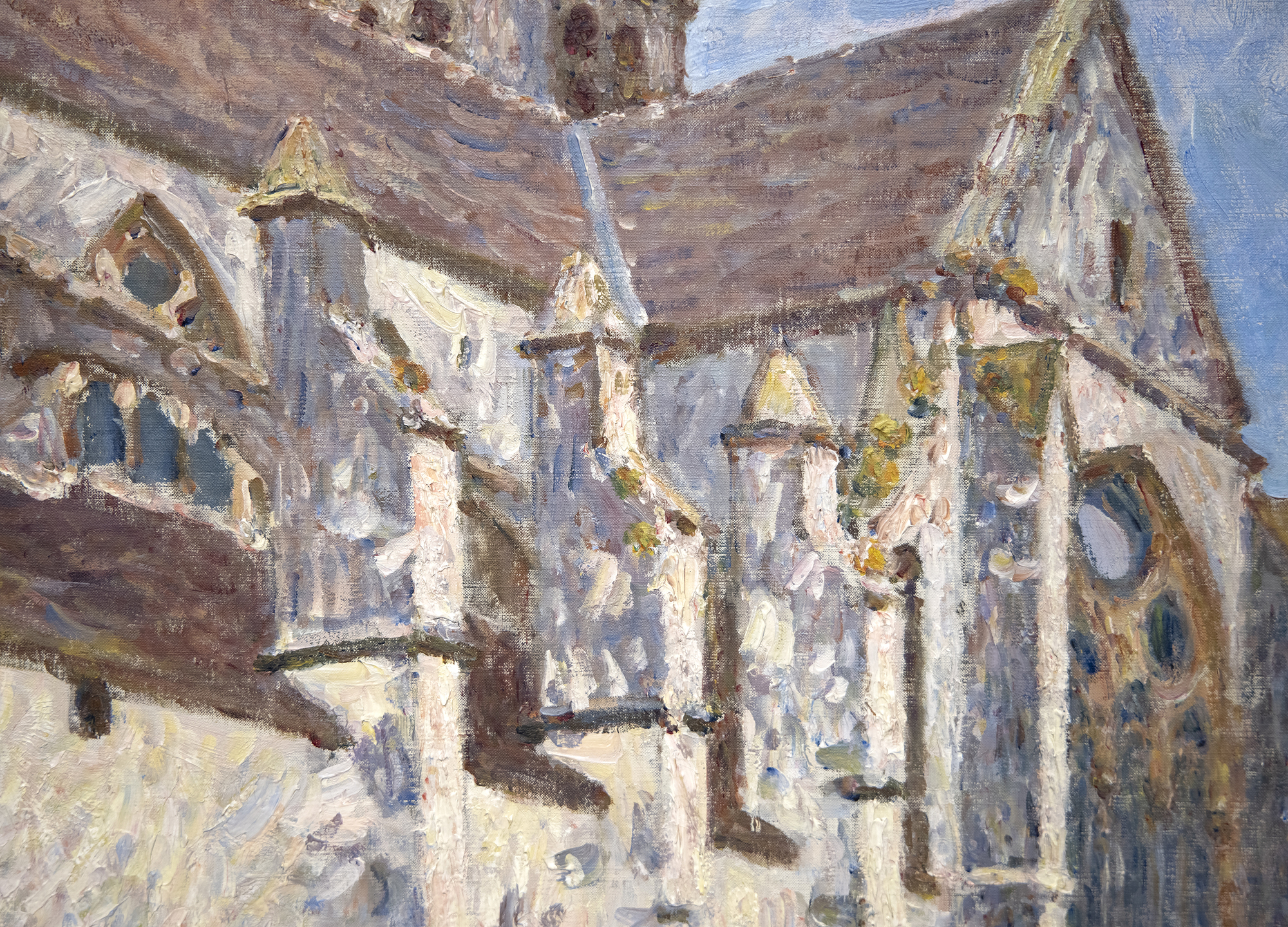
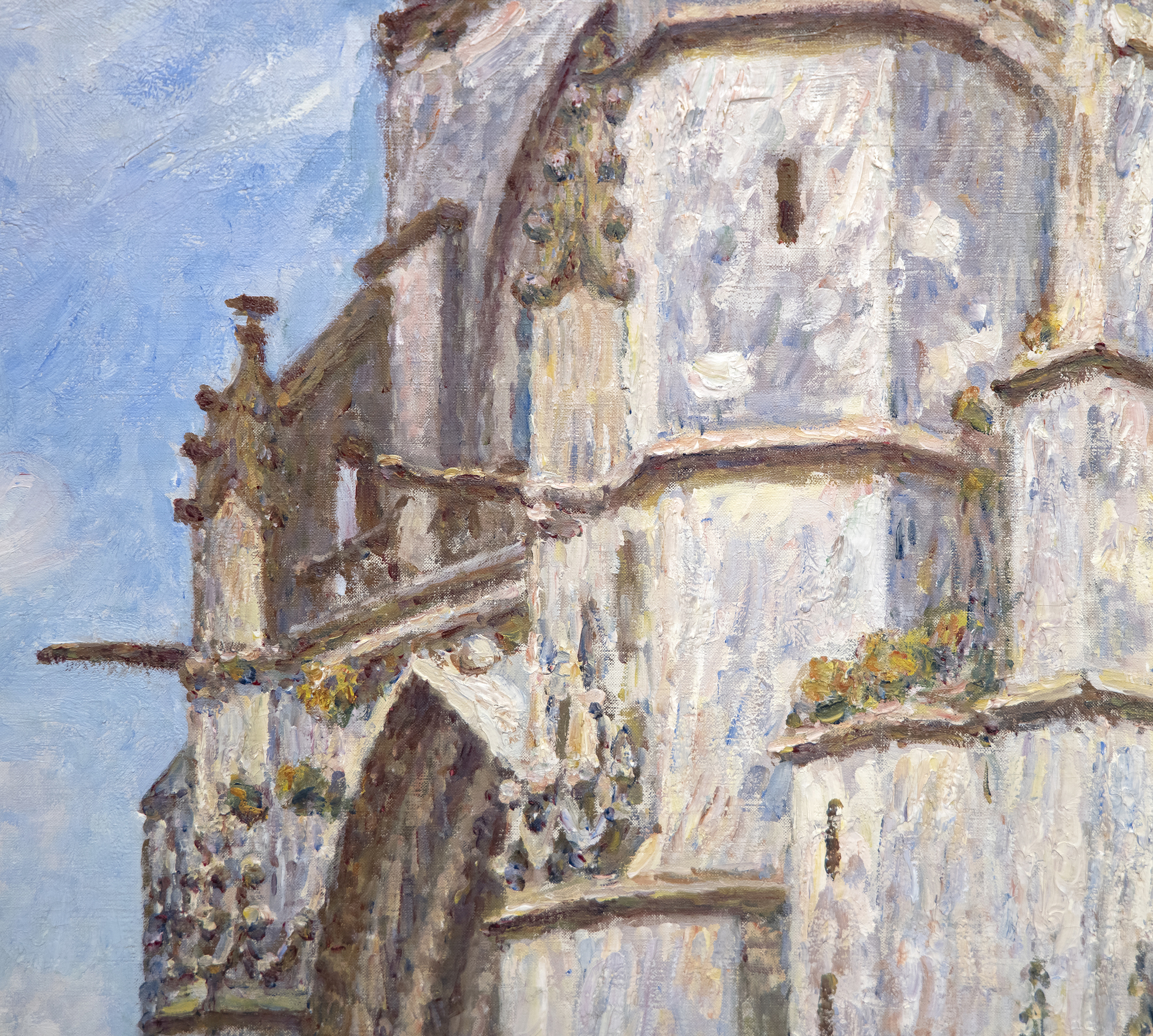
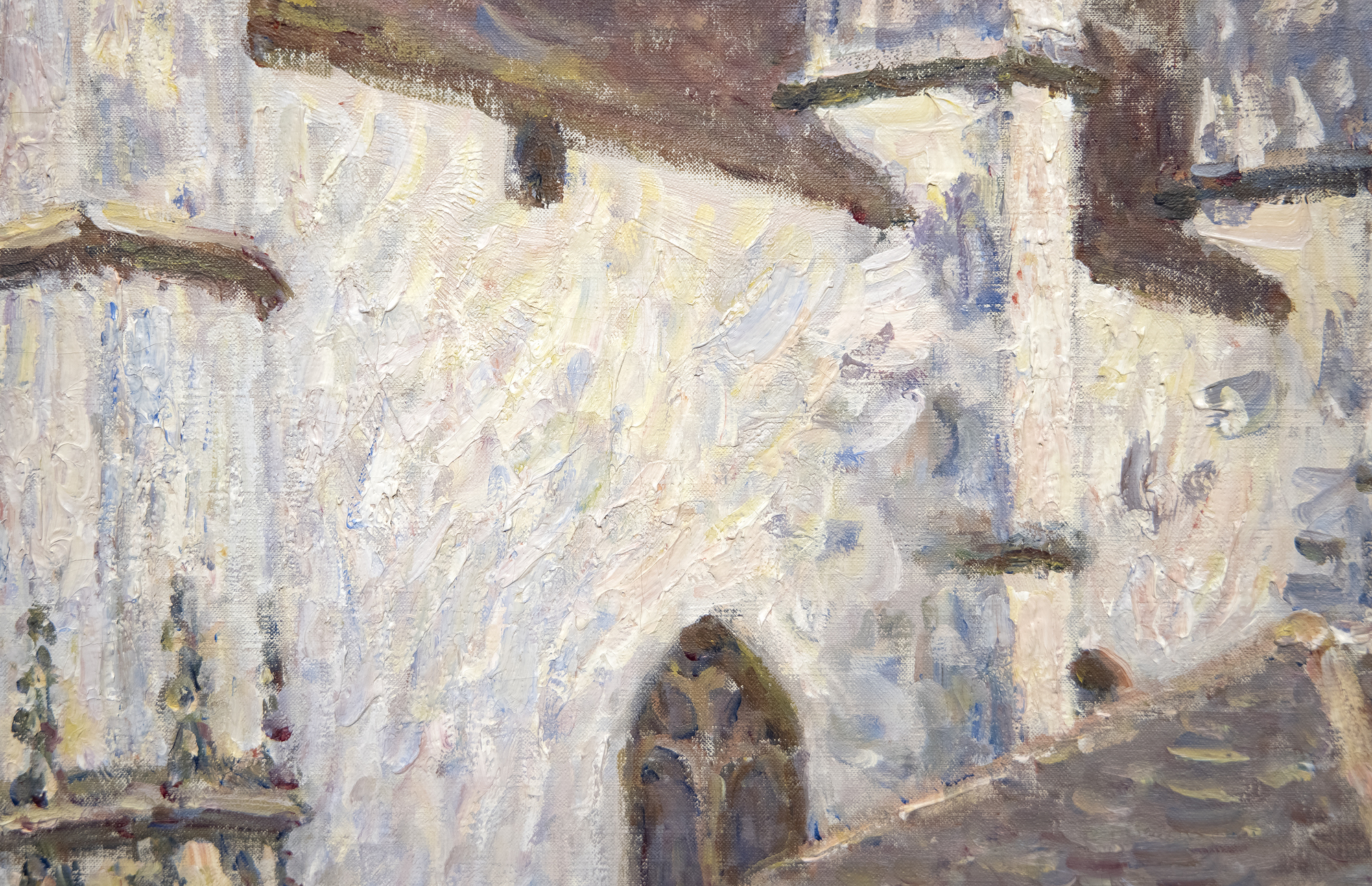
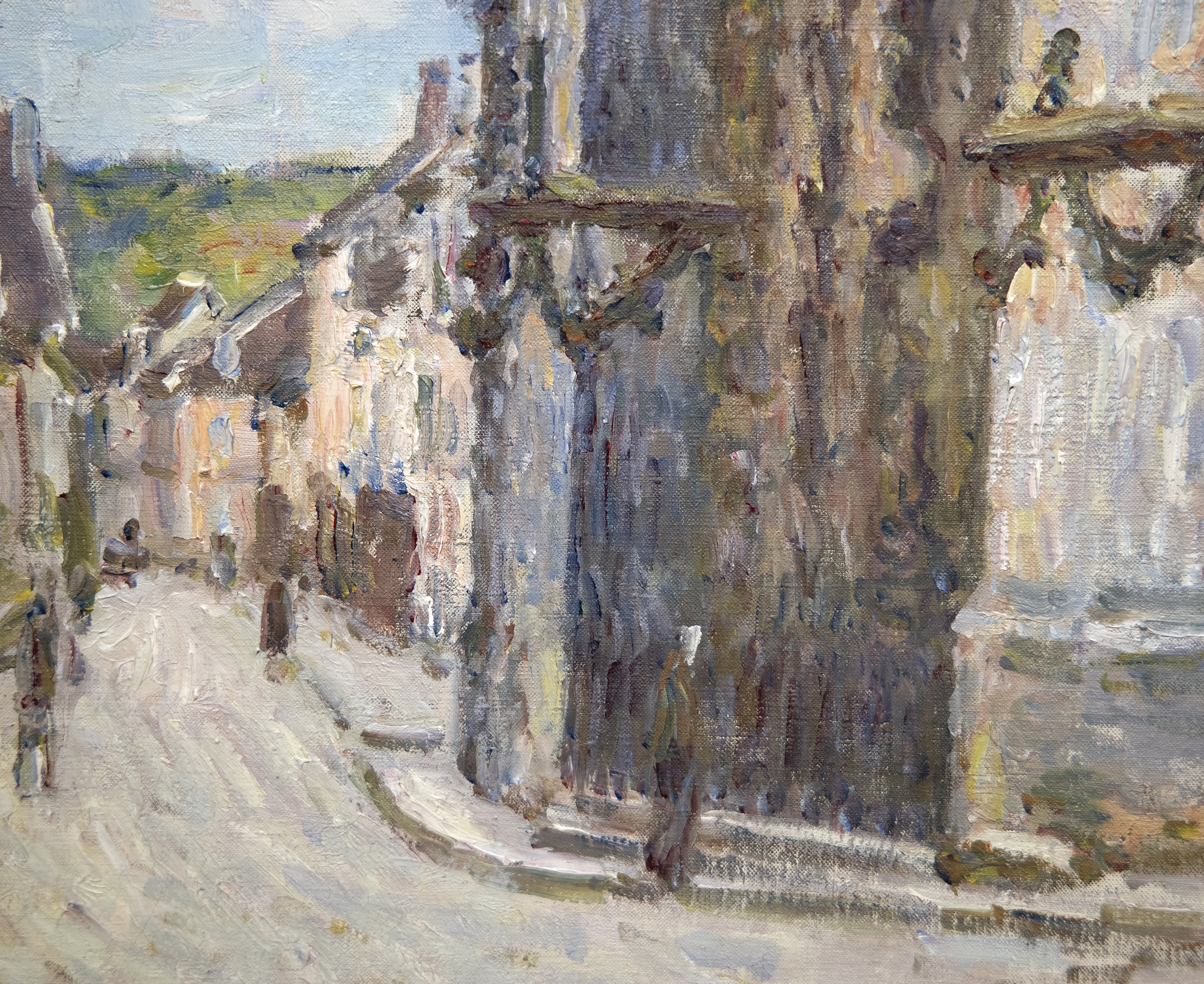
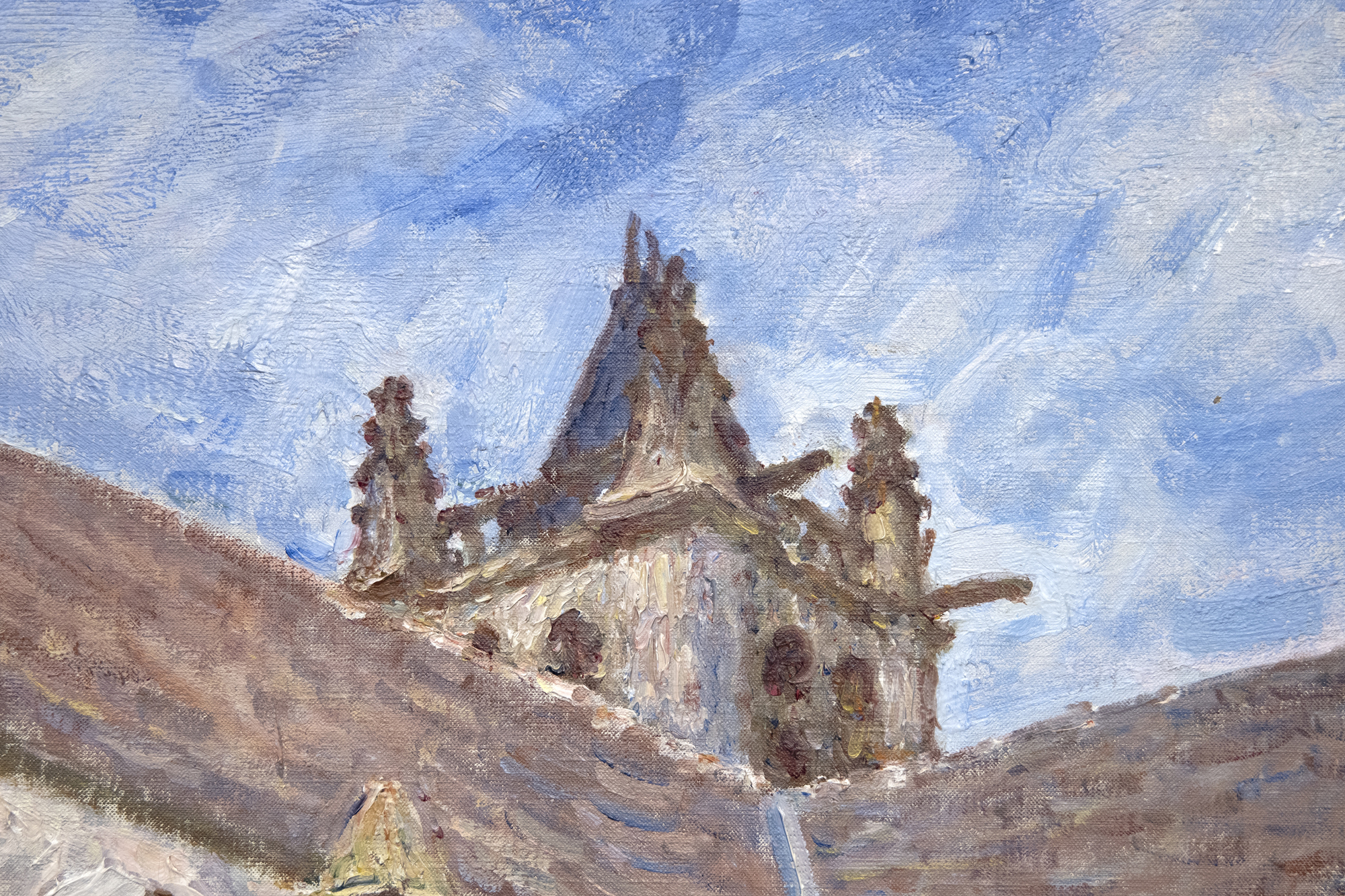
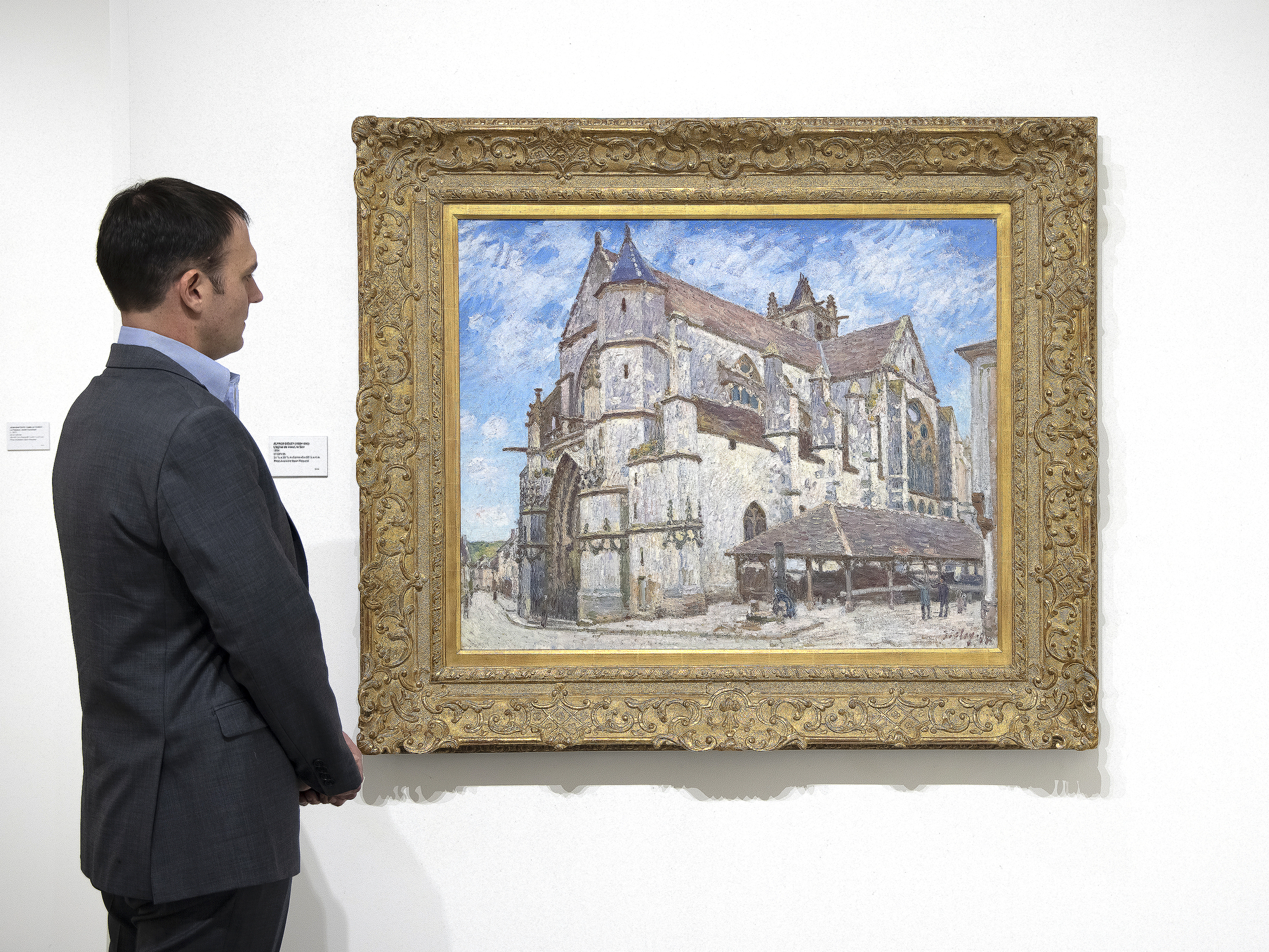
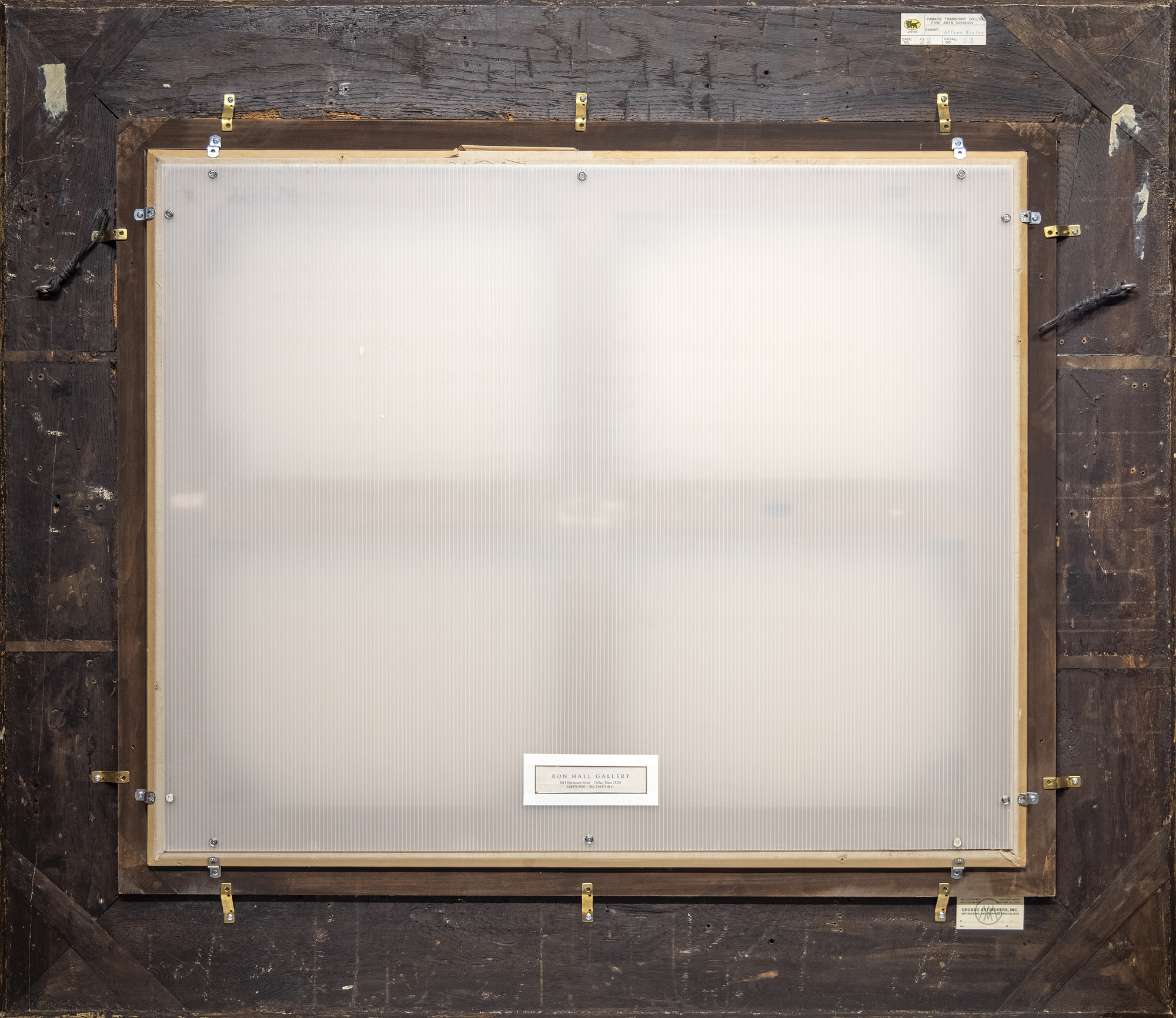
Provenance
Sisley EstateSale: Vente de l'Atelier Sisley, Galeries Georges Petit Paris, May 1, 1899, lot 13
George Viau, Paris
Sale: Hôtel Drouot Paris, February 20, 1908, lot 37
Pearson Collection, Paris (acquired at the above sale)
Sale: Vente Pearson, Galerie Paul Cassirer Berlin, October 18, 1927, lot 65
Private Collection
Sale: Hôtel Drouot, Paris, June 23, 1928, lot 98
Aubert Collection, Paris (purchased at the above sale; possibly Marcel Aubert)
Private Collection Edward Nahem Gallery
S...More...teven Bedowitz, Boca Raton, Florida (acquired in 1989)
Private Collection, New York
Larry Lacerte, Dallas (acquired in 1991)
Private Collection (acquired 1996)
Exhibition
Tokyo, Isetan Museum of Art; Kagawa, Takamatsu Municipal Museum of Art; Hiroshima, Museum of Art and Wakayama, Departmental Museum of Modern Art, Exposition Alfred Sisley, 2000, no. 53, illustrated in color pp. 138-139Literature
O. Reuterswaerd, 'Sisley’s Cathedrals, A Study of the Church at Moret' in Gazette des Beaux Arts, March 1952, fig. 1, illustrated p. 194F. Daulte, Alfred Sisley. Catalogue raisonné de l’œuvre peint, Lausanne, 1959, no. 835, illustrated in black and white
F. Daulte, Sisley. Les Saisons, Paris, 1992, no. 41, illustrated in color p. 73
R. Shone, Sisley, New York, 1992, pl. 134, illustrated in color p. 170 (mentioned pp. 164-165)
Brame, S., Sisley, A., Lorenceau, F., & Daulte, O. (2021). Alfred Sisley: Catalogue critique des peintures et des pastels. P. 347 ill. 347, 501
...LESS...
Nevertheless, Sisley strived to show the changing appearance of the motif through a series of atmospheric changes. He gave the works titles such as “In Sunshine”, “Under Frost”, and “In Rain” and exhibited them as a group at the Salon du Champ-de-Mars in 1894, factors that suggest he thought of them as serial interpretations. Nevertheless, unlike Monet’s work, l’église de Moret, le Soir reveals that Sisley chose to display the motif within a spatial context that accentuates its compositional attributes — the plunging perspective of the narrow street at left, the strong diagonal recession of the building lines as a counterbalance to the right, and the imposing weight of the stony building above the line of sight.





